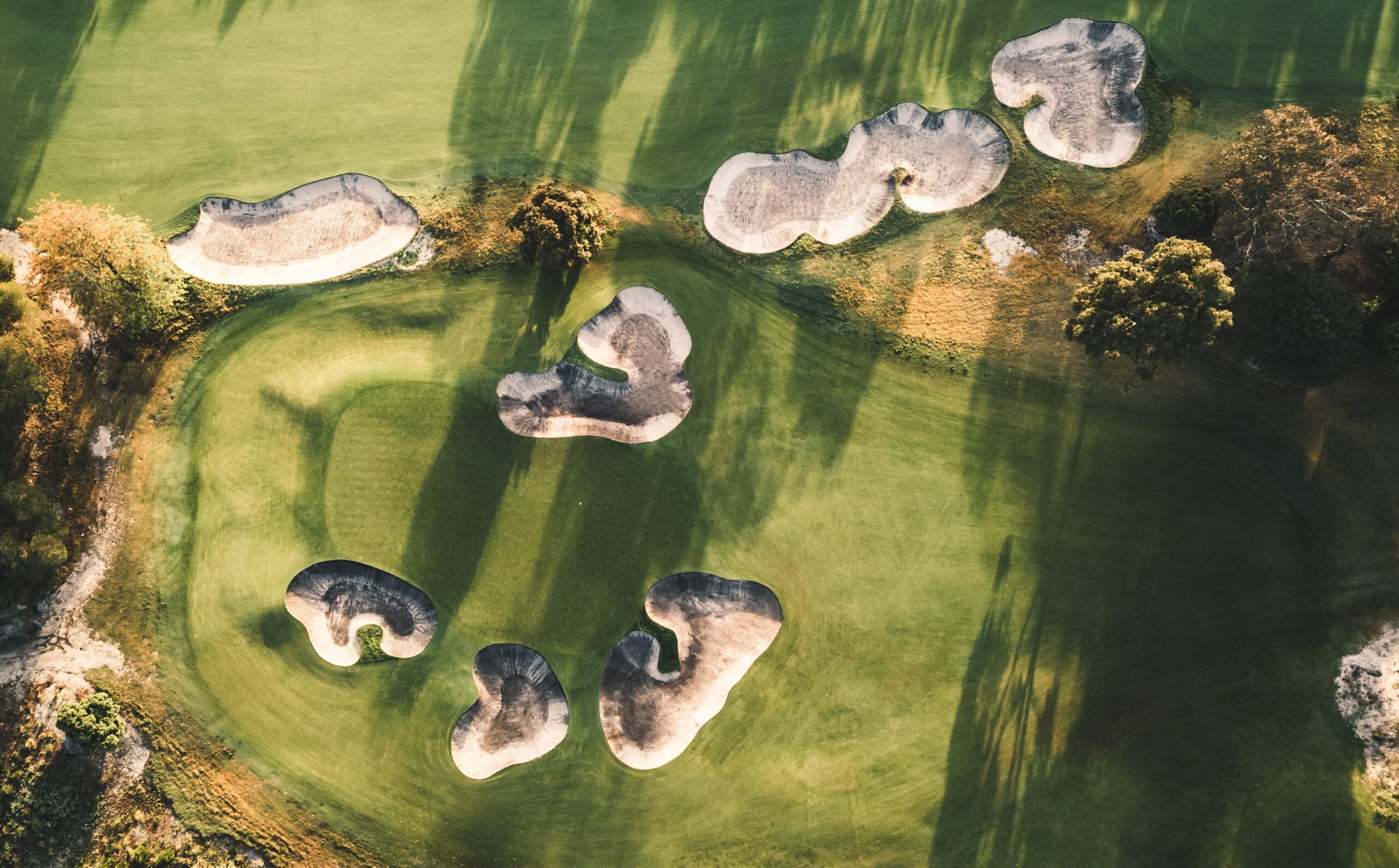Albatross (aka Double Eagle) – A score of three under par on a single hole. (Example: scoring 2 on a par 5.)
Birdie – A score of one under on a single hole. (Example: scoring 3 on a par 4.)
Bogey – A score of one over on a single hole. (Example: scoring 4 on a par 3.)
Bogey Golfer – A player who typically averages a score of bogey on every hole.
Bounce – The angle from the leading edge of the club to the lowest point of the sole of the club. The more bounce on a club’s sole, the more it will resist digging into the turf; bounce also helps displace sand on bunker shots. The sand wedge typically features the most bounce of any club.
Break – The curve in a ball’s roll on the green due to slope. Putts are said to break either left or right.
Cavity Back – An iron design featuring a hollowed-out cavity behind the clubface, which places more weight around the edges of the clubhead for higher Moment of Inertia (MOI) and forgiveness. Many putters are built in the same style.
Center of Gravity (CG) – The exact point in the clubhead where the head is perfectly balanced. The placement of a club’s CG plays a key role in performance. In general, the lower the CG, the higher the ball will launch off the clubface.
Cut (aka Fade) – A shot that curves gently to the right when struck by a right-handed golfer. (For lefties, a cut or fade curves to the left.)
Double Bogey – A score of two over on a single hole. (Example: scoring 7 on a par 5.)
Draw – A shot that curves gently to the left when struck by a right-handed golfer. (For lefties, a draw curves to the right.)
Eagle – A score of two under par on a single hole. (Example: scoring 3 on a par 5.)
Fat Shot – When the club contacts the ground behind the ball, usually causing a loss of yardage compared to a solid strike.
Fade – See Cut.
Forgiveness / Forgiving – A club is said to be forgiving if it produces relatively good distance and accuracy when the player misses the sweet spot. While less-skilled golfers need clubs with maximum forgiveness, better players often prefer less forgiving clubs (which make it easier to intentionally curve the ball).
Grooves – A series of straight, parallel lines cut into the clubface, typically horizontal to the ground. Grooves grab the golf ball’s surface and impart backspin.
Handicap (aka Handicap Index) – A number that represents the skill level of a golfer. (The lower the handicap, the better the golfer.) According to the United States Golf Association (USGA), the USGA Handicap System™ allows golfers of all abilities to compete on an equitable basis. The weaker player may deduct strokes based on the stronger player's handicap. Your actual handicap is based on a complex calculation taking into account your golf scores and the relative difficulty of the course.
Hook – A shot that curves hard to the left when struck by a right-handed golfer. (For lefties, a hook curves to the right.)
Loft – The number of the club indicates how high and far the shot will travel. The higher the number, the greater the angle of loft is. When the loft is very high, the ball will fly higher but for a shorter distance.
Long Iron – An iron with minimal loft used to hit the ball a long distance. The 2 – 4 irons are considered long irons.
Mid-Iron – An iron with medium loft used to hit the ball a medium distance. The 5 – 7 irons are considered mid-irons.
Moment of Inertia (MOI) – A measurement (in grams per centimeters-squared) of how much a clubhead resists twisting on impact with the ball. A higher MOI means the club is more resistant to twisting (more “forgiving”), so shots struck off-center will generally fly farther and straighter than a similar shot with a club of lower MOI.
Muscle Back – An iron design with no cavity in the back of the clubhead. This classic club style features more weight behind the sweet spot and is less forgiving than a cavity back model, but is often favored by top players due to its feel and ball flight.
Par – The score a scratch golfer is expected to make on a hole, assuming two strokes on the putting green.
Perimeter Weighting – Club design in which weight is distributed around the head’s perimeter rather than its center. Featured in drivers, fairway woods, hybrids, irons and putters, this design creates a higher Moment of Inertia and enhanced forgiveness.
Scratch Golfer – A player with a handicap of 0 who typically averages an 18-hole score around even-par.
Shank – A shot, struck on the club’s hosel, which shoots almost directly to the right when struck by a right-handed golfer. (For lefties, a shank shoots to the left.)
Short Iron – An iron with high loft used to hit the ball a short distance. The 8 – 9 irons are considered mid-irons.
Slice – A shot that curves hard to the right when struck by a right-handed golfer. (For lefties, a slice curves to the left.) A slice is considered the most common mistake among amateur golfers.
Sole – The bottom of the clubhead (i.e., the part that rests on the ground when addressing the ball). The soles of fairway woods, hybrids, irons and wedges play an integral role in each club’s performance.
Thin Shot – When the bottom part of the clubface strikes the ball at or just below its equator, causing the ball to fly very low and often past the target.
Topped Shot – When the club’s sole strikes the top part of the ball, causing it to bounce or roll rather than launch into the air.















